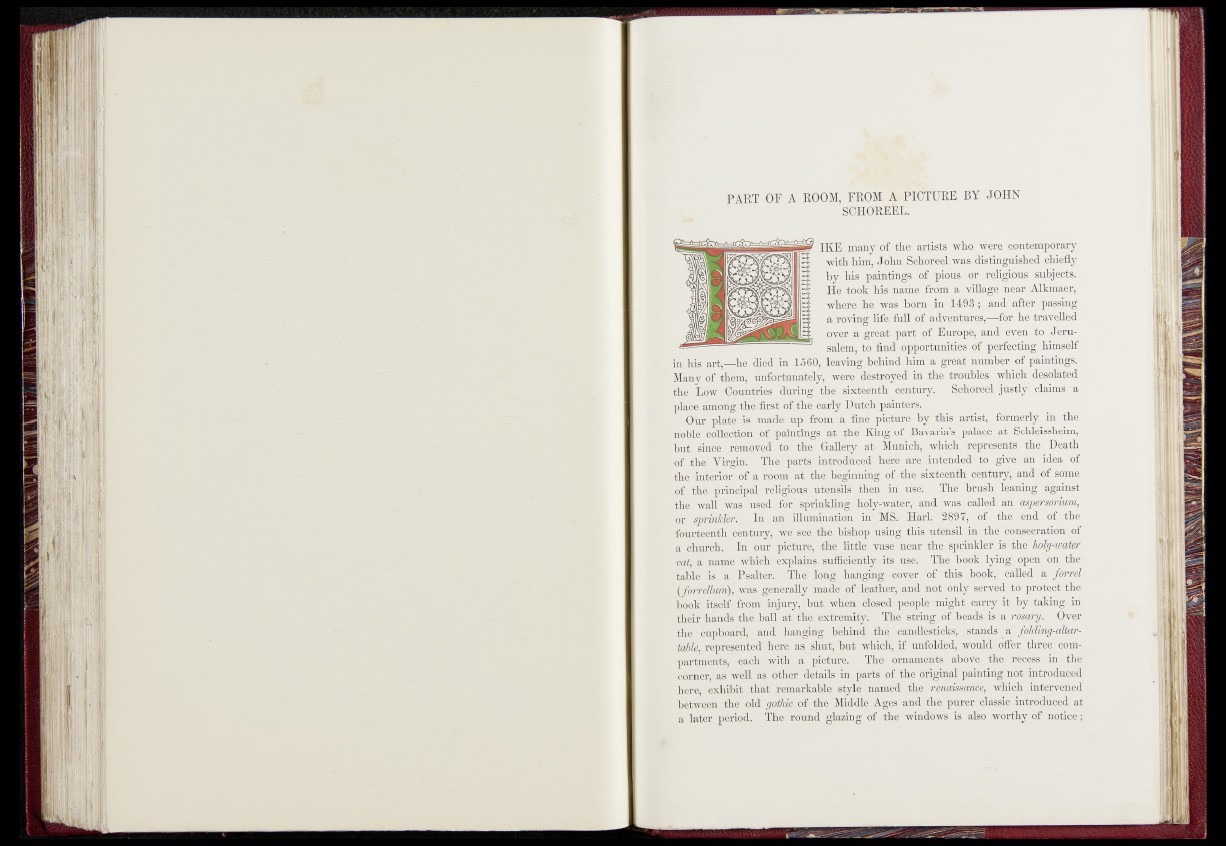
PART;® |'A ROOM, FROM-! A*PICTURE BY JOHN
K fH O R E E L .
IK’E pinny; o f f i s t s "twRb,- were contemporary
Lffijfclihn, JohtfaaH^pfa^as distinguished chiefly
paintings pious ’^>r religious subjects.
1 He^took his name trom-, a Kflldou near Alkmaer,
K ,where - he w?,s bom in 14$3S,\\and after -passing
a roving life fujl pf adventures^AJI he travelled
great* 'andjjfrBBmf to Jerusalem,
to find himself
Sfflshia a r t—he died W J l e a v i ^ h e h i n d him a great number of paintings.
Many.®f'them, ved in the' troubles which idêsófated^«
Eife' 'L ow u n t r i e s during •'tlTe’'^sixteenth, century;' -Schpreel justly claims a
-_pla.ee among thé first of the'early I^ fc h painters. _
Ounbplatè1 'is'made up from’ a We. picture by this■-artist,^formerly in the
Aoble fcólÉ'ifionï/®. -paintings at the King of Bavaria’s palace gt Schleissheim,
but sin"cè^rr;émövcï^tb the Gallery at Municjlj whitfe represent5» tlie Death
the Yiïgin. parts introduced^ -l^^^^e tihjteüdfed, to^'^fee^an idea of
HËHHpdtioT><§>£% r®m~at the beginni^lof«the sistecntlAentu-rjïajad of some
f«>f the principal religious .Utensils then injhïsiSy^., p'TÏie^ brush leaning against
the wall was imbd for "sprinkling holy-water, and was ‘called an asper&orwm,
| i | sprinkler. In an illumination in MS. Harl. 2og^yif^fIu> end of the
ffburteenth fcentury, we see the bishop using tflifmpiisiltiu the ration of
% church. ' In our picture, the little vase neartihe sprinkler js< the\hoIy-vvter
vat a name - which- explains sufficiently its useT^^fifelMolc King-.open _pn| the
table is a Psalter. The long hanging • cover of this \ book, ^called ^a* jurrA
Myofrellum), was generally made oftil^^h'er,* and nptionly^;s^'rvedoto’»protect the
'"boot itself from injury, but when closed.jilbple 'might^narry it by taking in
'their hands the ball at tS ex trem ity ^ ^ ^ ; string.pfefeads’as a rosary.' Over
^tiiS ' cupboard, and hanging! behindj^Ëè^ datfule^ticks, stands a' foldmg-altar-
table, represented here as shut, but which, if'unfolded would offer three compartments,
each with a pijktirè.' The ornaments above^®e?-.recess in the
corner, as well as other details in parts of the|p|Iginal painting not introduced
here, exhibit that remarkable style - named the renaissan<r} which intervened'
between the old gothic of the Middle Ages and the purer classic' introduced at
a later period. The round glazing ‘ófeffié windows Is also worthy of notice;